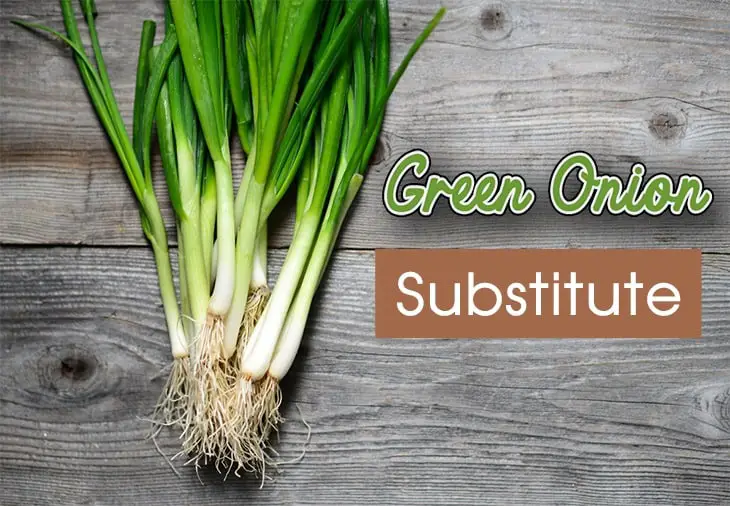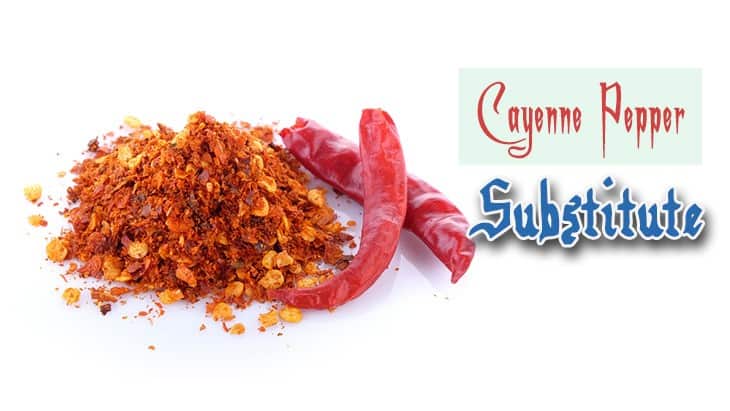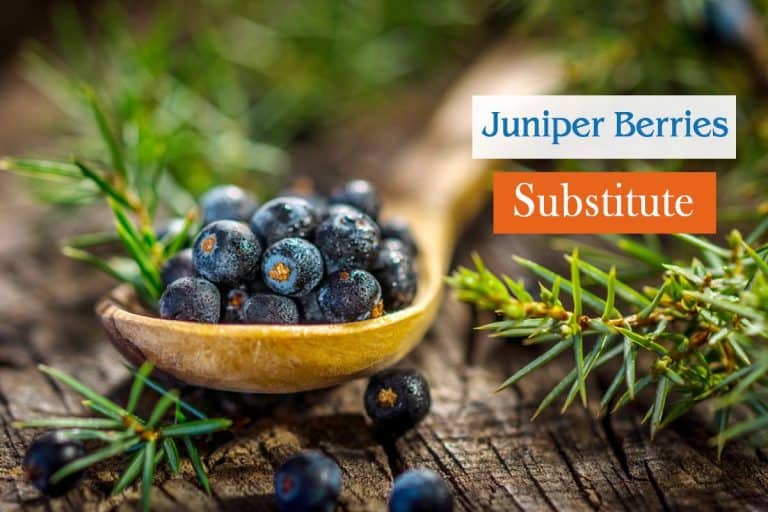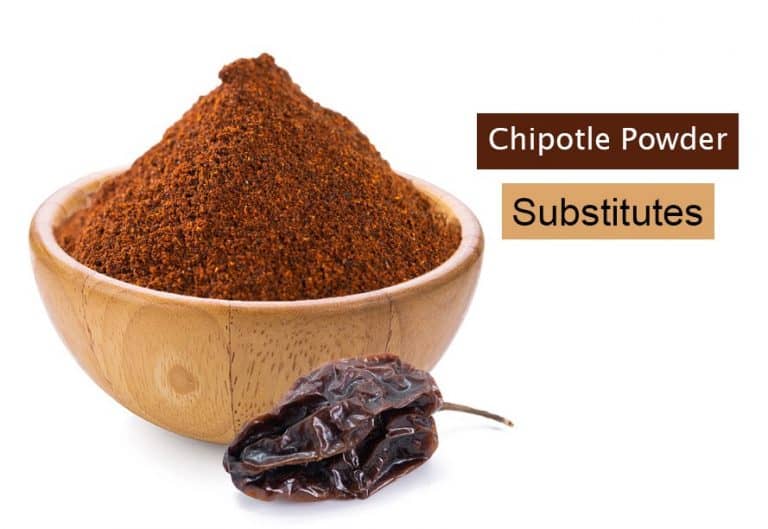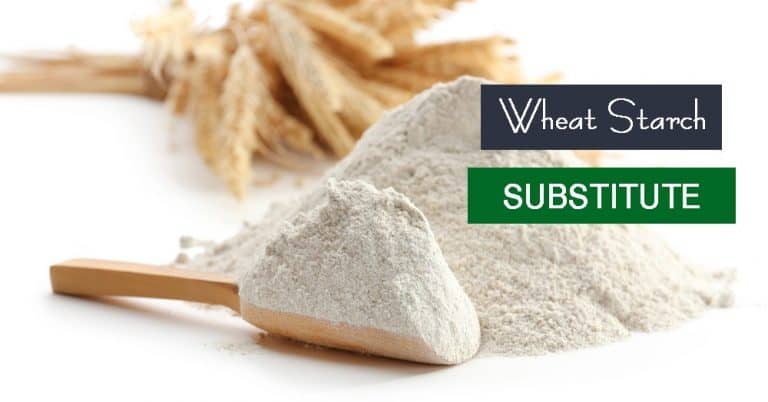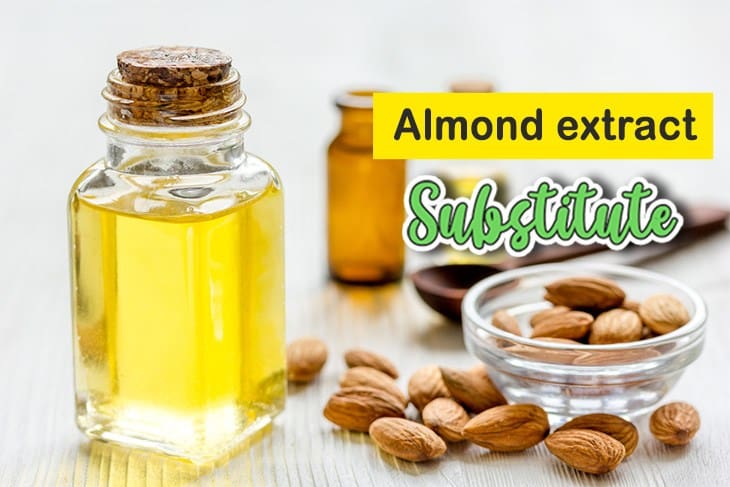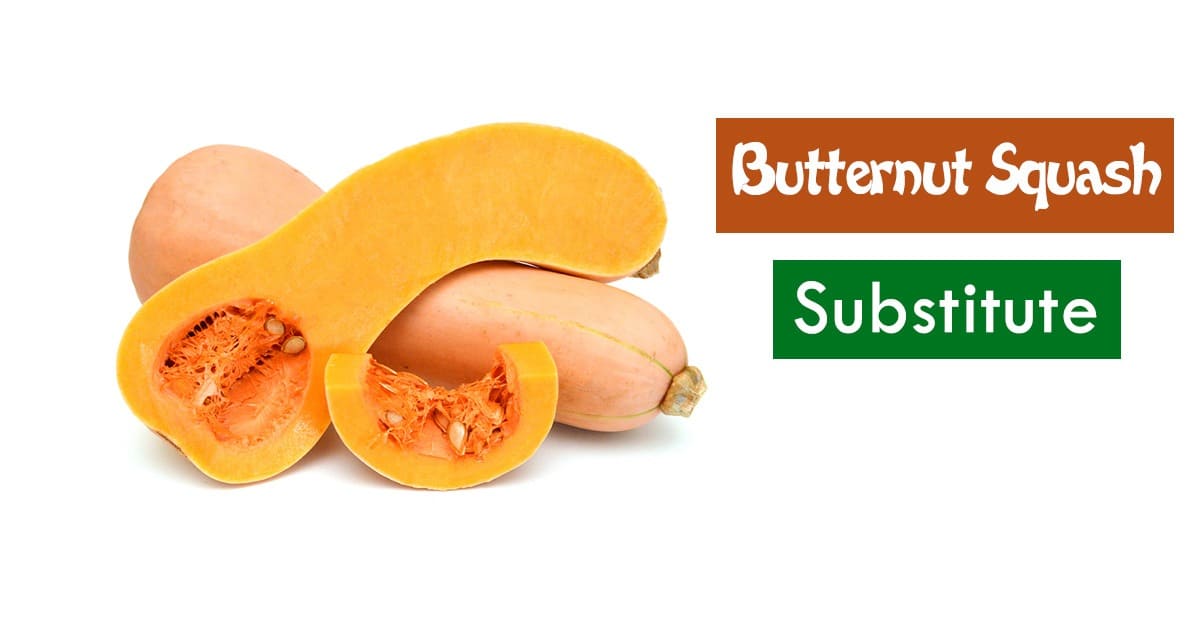
Finding substitutes for butternut squash is not a hard task, but sometimes, you may end up discarding an awkward dish if you don’t know the basis in choosing a proper alternative.
Winter is around the corner, reminding us of the hot roasted butternut squash dish that can warm up every single body’s cell. Have you stored any butternut squash since fall for this cold season?
If you, unfortunately, can’t find any, we are here to help you with 11 ideas with incredible outcomes.
Top 11 Substitutes For Butternut Squash
1. Acorn Squash
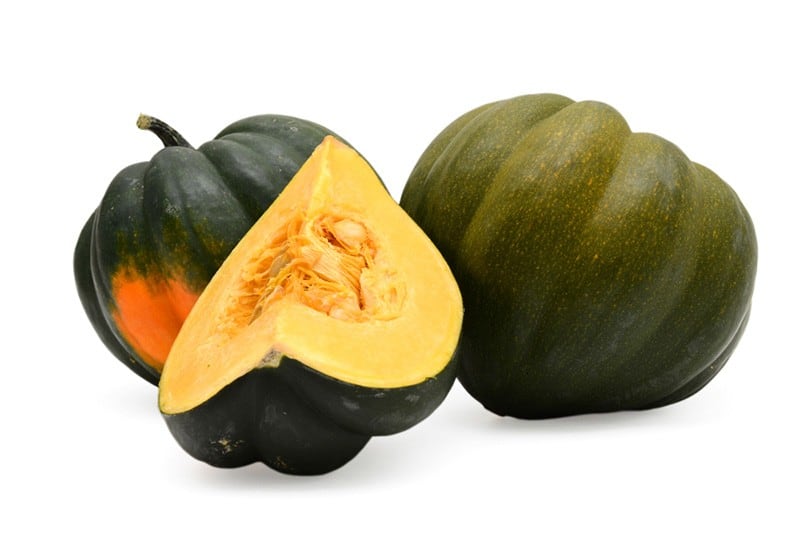
As you know, butternut is a winter squash, so any squash in this variety can be a replacement for butternut squash with a comparable outcome. And acorn squash is a promising substitute from this family.
As its name suggests, this fruit resembles an acorn’s shape with prominent ridges. Its skin is dark green with some orange marks, and Mother Nature sends it a beautiful contrast with brightly yellow-orange pulp inside.
Acorn squash’s taste profile closely lives up to butternut with a nutty and sweet kick. You can use it whenever the recipe calls for butternut squash, like baking, steaming, sautéeing, tossing in soup. But we bet that acorn squash was born for roasting.
Roasted acorn squash with the skin on is an easy and quick dish that gives you a full flavor to please your palate. Roasting enriches its sweetness, and pairing with some salt and butter, a soft and aromatic acorn squash dish is ready to go.
Acorn squash is an antioxidant star, which helps neutralize potentially harmful free radicals. These antioxidants protect you from many health issues like heart disease, stroke, high blood pressure, arthritis, and certain cancers.
2. Buttercup Squash
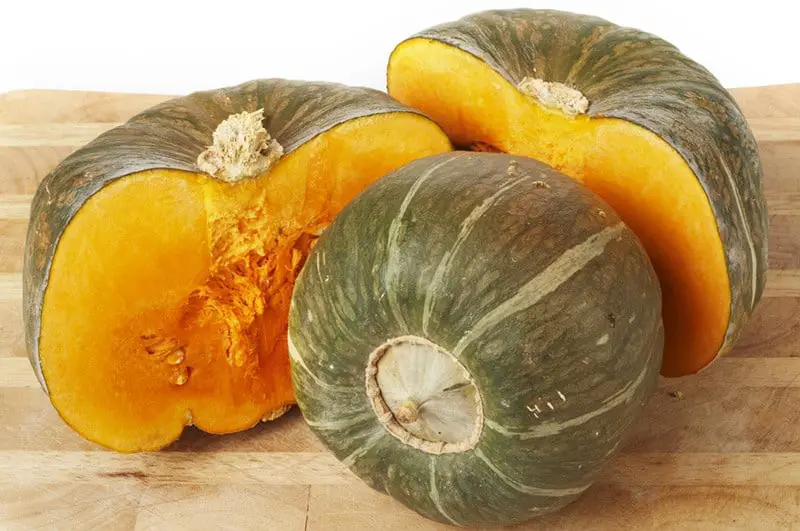
Buttercup squash is round and squat with a dark-green rind marked with some gray-green striations. The vibrantly orange flesh inside is dense and firm.
You may find it hard to spot this squash since it is reminiscent of kabocha and turban squash in appearance. However, the buttercup has a round ridge at the bottom, different from kabocha and smaller than turban squash.
Butternut squash is the sweetest among the winter variations. And luckily, buttercup squash falls on the sweeter side with a creamy taste to decently substitute for butternut squash. You’ll want to steam or bake it for its dry pulp, and the firm texture is also perfect for curries.
We all know that squash is a fruit, so why not pair it with another fruit? Try to cook buttercup squash with apples for an eye-opening outcome. You will enjoy the juicy yet crunchy treat from apples with a creamy and sweet squash alongside.
Buttercup squash contains a huge amount of vitamin C, promoting your immune system. Not to mention it is rich in vitamin A, potassium, and numerous minerals. Its deep orange hue signals a significant content of beta-carotene with powerful anti-inflammatory properties.
3. Sugar Pumpkin
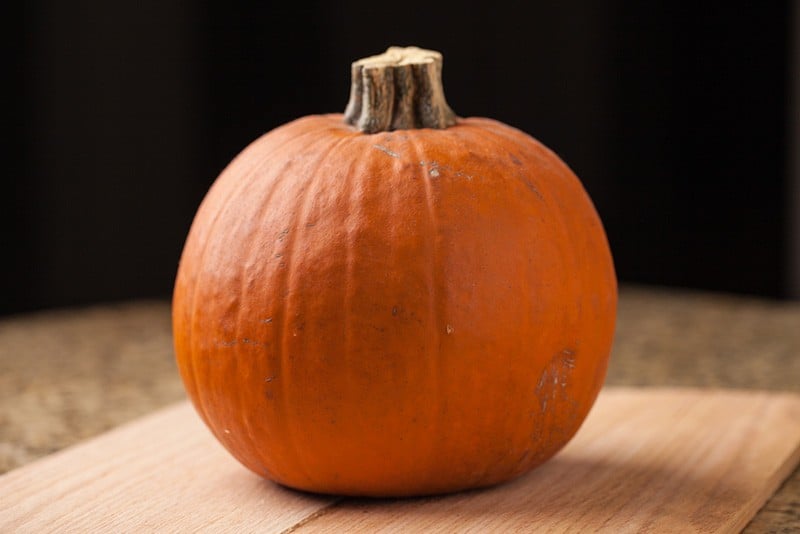
Sugar pumpkin, also called pie or sweet pumpkin, is one of the easy-to-find substitutes for butternut squash. This pumpkin is globular and uniform in shape. Its smooth orange skin comes with shallow vertical ridges, connecting into a thick, green-brown stem.
You can expect a sweet and grassy flavor from pie pumpkin, but it’s somewhat sweeter than butternut squash. That’s why you will find it in many pie recipes. Don’t get it wrong. Sugar pumpkin can replace butternut squash in sautéed, steamed, roasted, or baked recipes in a pinch.
Well, anyone will regret not trying the fall dessert – Pumpkin whoopie pies filled with cream cheese. This pie is a cross between cookies and cakes. A tangy and sweet cream cheese filling is the destined match to the spice-rich sugar pumpkin.
Pie pumpkins are rich in antioxidants, such as beta-cryptoxanthin, beta-carotene, and alpha-carotene. These substances neutralize free radicals, preventing cell damages.
This pumpkin is also high in vitamin A, zeaxanthin, and lutein, reducing the risk of sight loss – a common elderly health issue.
4. Hubbard Squash
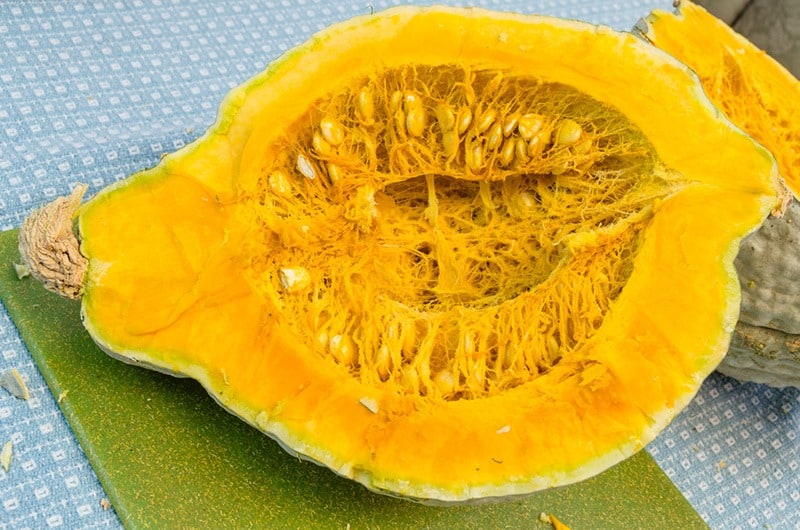
Hubbard squash is one of the biggest siblings of butternut squash. It boasts a firm and hard rind, ranging in hue from dark green to gray or pale blue with pointed ends. The yellow-orange inner flesh is tender and dense.
Tasting this squash reminds you of pumpkin and sweet potatoes. Thanks to its sweet and pumpkin-like flavor profile, you can rest assured when using it and butternut squash interchangeably in roasting, baking, or making soups, purees, and pies.
We love the vegan dish of roasted hubbard squash and broccoli with Tahini sauce the most. Imagine a warming tray full of chunky veggies, including hearty broccoli and sweet hubbard squash, finished with a zingy lemon and butter beans. All are well flavored in the Tahini sauce.
The good thing is, this dish is a one-for-all recipe, meaning that all broccoli substitutes can work just fine.
Not only being a vegan pleaser, but hubbard squash is also a diet-friendly ingredient. It’s low in fat, cholesterol-free, and an excellent source of fiber. What’s more, vitamin A in this squash does wonders for your eye health, and vitamin C is an immune booster.
5. Delicata Squash
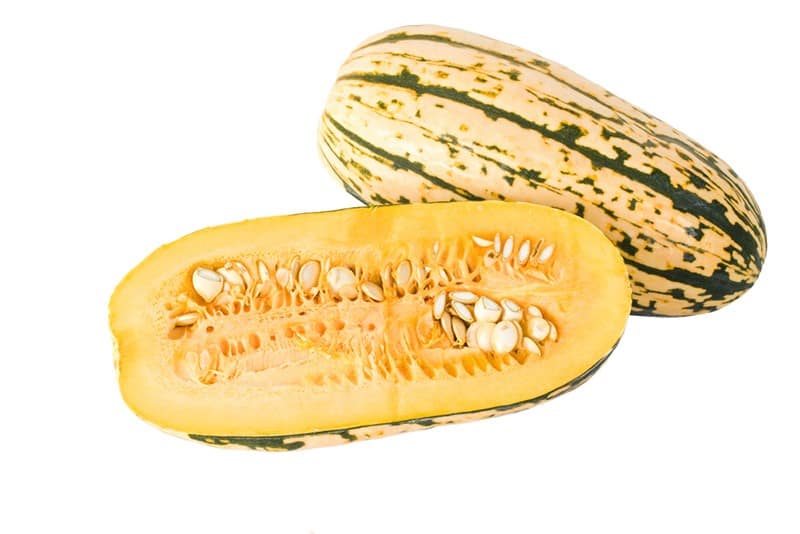
Delicata squash, also called sweet potato squash, is one of the smallest winter squash. This cylindrical squash comes with a cream or yellow rind with dark green stripes and yellow-orange flesh inside.
People call this fruit sweet potato squash for a reason. It boasts a sweet primary taste, recalling brown sugar and sweet potato flavors. You can use it instead of butternut squash in baked, steamed, sautéed, or roasted dishes.
Are you fed up with these classic recipes? Let us blow your mind with the Stuffed delicata squash. Its small size is ideal for stuffing, and this dish can rival any stuffed chicken for a vegan treat. Add some blue cheese and dried cranberries. They beautifully complement the outer sweet flesh.
This squash is high in fiber, decreasing your likelihood of suffering from heart disease, diabetes, and obesity. Delicata squash is also packed with potassium: a one-cup serving offers you an impressive 500 mg of potassium, supporting blood pressure control.
6. Banana Squash

Don’t let the name fool you. This winter squash’s size has nothing in common with a banana at all. In fact, it’s large, elongated, and can grow up to 2-3 feet long. The outer skin varies in color, from orange, pink to blue, coming with vibrantly orange inner flesh.
This squash serves you with a rich flavor and a sweet and earthy punch that can live up to butternut squash. You can roast, bake, or toss it in soups or stews in the place of butternut.
But we find that banana squash soup is never out of date. The gorgeously golden soup is a feast for the mouth and the eyes too. Its creamy texture with well-balanced flavor is a perfect match to bread or fresh rolls, appealing enough to make you lick the dish clean.
Those with cholesterol-related issues can trust this veggie since it is cholesterol-free, fat-free, and sodium-free. Banana squash is also prized for its high content of vitamin A, which is a good friend for your eyes.
7. Kabocha Squash
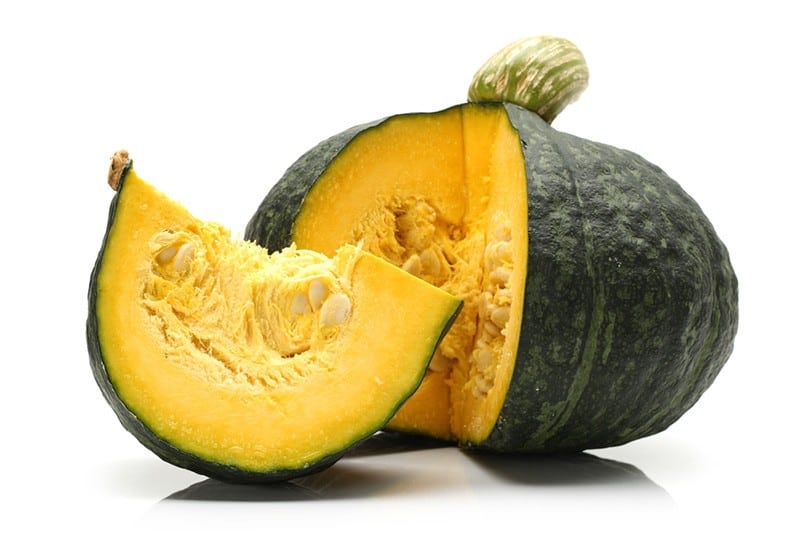
Kabocha squash is round and squat, similar in shape and size to buttercup squash. However, as mentioned, buttercup does come with a round ridge at the bottom, while kabocha is flattened at the stem end.
You will notice its dull outlook with a dark-green rind sometimes spotted with small lumps and brilliant yellow-orange flesh. Its taste is a cross of pumpkin and sweet potato, remarkably sweet and nicely nutty.
Kabocha squash is a versatile ingredient and can be utilized as an alternative for butternut squash. You can encounter it in steamed, roasted dishes, soups, or as a pie filling.
Looking for a fresh and green dish? Treat yourself to a Kabocha squash salad. Bitter veggies are the ideal foil for the sweetness of caramelized kabocha squash to shine. This hearty and festive salad is a tasty switch from the normal salad, bringing all the fall flavors you dream of.
Kabocha is a nutritional powerhouse positively linked to many health perks, including boosting the immune system, preventing diabetes and cancer, promoting heart health, and treating inflammation.
Those are all thanks to its richness of fiber, antioxidants, vitamins C and A, some B vitamins, potassium, and magnesium.
8. Sweet Dumpling Squash
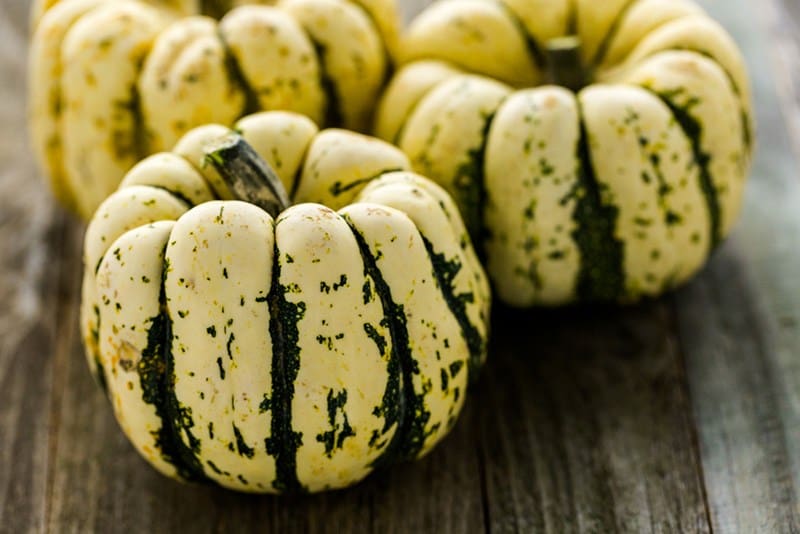
Sweet dumpling squash is small in size, looks like a miniature pumpkin but round, and slightly caved in at the stem end. The thin rind is a creamy white base mottled with green, orange, or yellow vertical stripes.
The orange to gold flesh is moist yet firm, with a central cavity containing stringy pulp and cream-colored seeds. Dumpling squash brings a smooth, tender texture with a delicate sweet flavor reminiscent of corn.
You can use sweet dumpling squash for baking, roasting, steaming, and sautéing. Also, its single-serving size is perfect for stuffing. We usually cook this squash with the skin on for its rough exterior, making it hard to peel off. But the skin is edible, anyway.
Do you know that this squash also appears in sweet recipes? Delight your palate with this wonderful dessert – Sweet dumpling squash crème brulée.
The delicate sweetness of dumpling squash paired with caramelized maple sugar is perfectly delivered through the smooth and creamy custard. What could be better to end a meal?
Like other winter squash, this fruit is well known for its vitamin A and C, boosting eye health and immune system. Also, iron in sweet dumpling squash is an active supporter of red blood cell functions.
9. Turban Squash
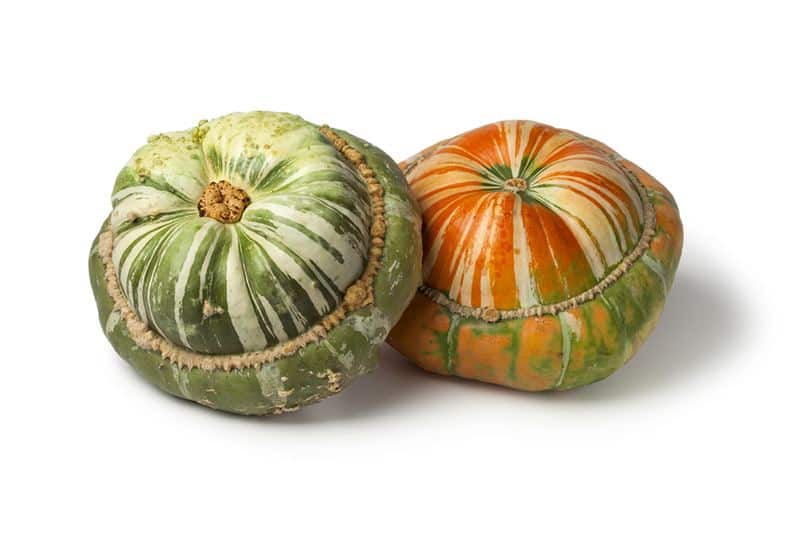
As you can guess from its name, this fruit irregularly resembles the shape of a squash wearing a turban with a bumpy and dull exterior. Its skin color varies from yellow, orange to mottled green. You can easily recognize this veggie, thanks to its awkward appearance.
You can’t expect a sweet touch from this mild squash, but you can bet on its butternut-like texture when substituting. Plus, it blows to your dish a nutty trace to enrich the flavor.
Turban squash is a decent decoration with an incredible visual effect. Also, you can toss it in soups or make a delicious stuffed dish.
Making turban squash soup brings you a photoshoot-worthy dish in the meal that catches any eye. Adding some leeks, carrots, sweet potatoes, and coconut milk is the secret to a creamy and rich soup without overwhelming our star – the turban squash.
This type of winter squash contains tons of vitamin A for your healthy eyes and vitamin C for a better immune system to fight off the common cold. What’s more, you will benefit from its fiber, beta-carotene, calcium, and potassium.
10. Sweet Potato
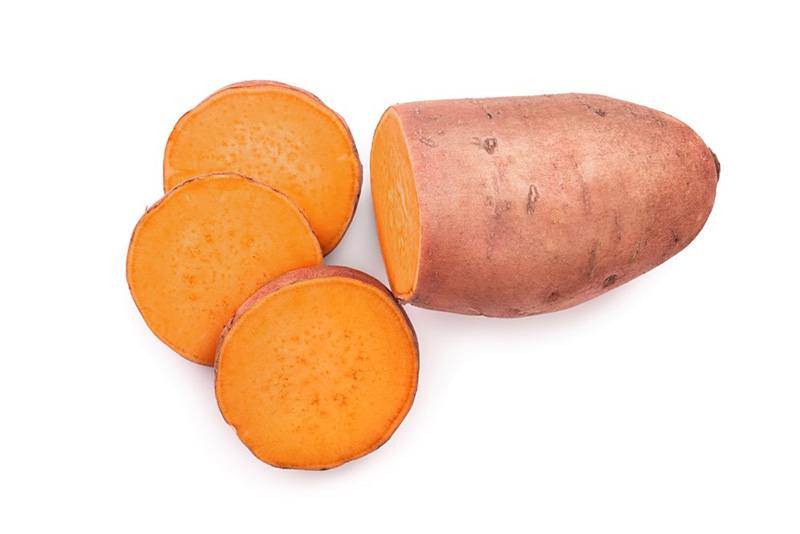
Now, if you are still finding something out of the winter squash family for a flavor twist, you can’t go wrong with sweet potatoes. These underground tubers are coated with pink and brownish skin but vary in flesh color, from yellow, orange, to purple.
No matter what type of sweet potatoes you opt for, you’ll get a sweet tone in a soft, mushy texture to acceptably replace butternut squash. It is best to substitute with sweet potatoes in baking, roasting, or frying dishes.
Remember to cook them on high heat until they reach a crispy and caramelized state.
Carotenoids in this tuber may lower the risk for cancer. Purple sweet potatoes are rich in anthocyanin, reducing the chances of getting colorectal cancer. Believe it or not, a sweet potato can meet up to 400% of recommended daily intake of vitamin A.
11. Carrot
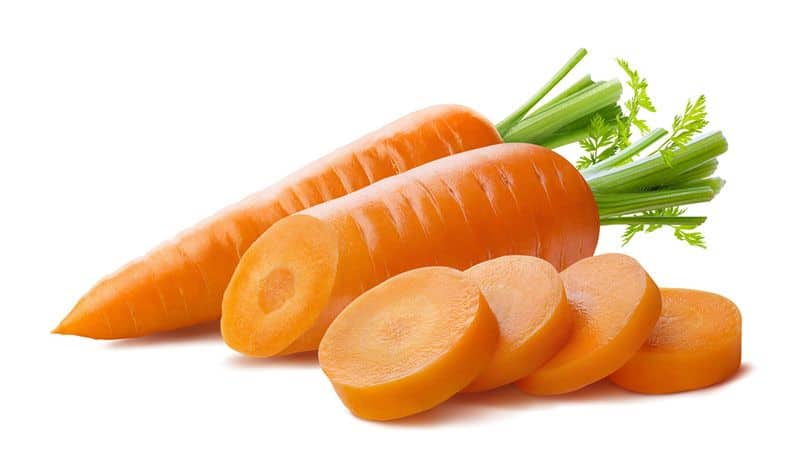
Well, we all know carrots, but any of you know that it could be an alternative to butternut squash despite their different roots? You can encounter carrots in many variations, from orange, purple, red, yellow, or white.
But, we appreciate orange carrots for their similarities in color and taste with butternut squash. Carrot flavor is hard to describe. We can say that the center of this complex profile is still sweetness, but you can also trace a hint of fruitiness, earthiness, and bitterness.
Carrots can take the place of butternut squash when making soups, pies, cakes, and roasted dishes.
Carrots are a great source of fiber, controlling your blood sugar levels. They are also loaded with beta-carotene and vitamin A, lowering your diabetes risk. Your bones will be thankful if you regularly consume carrots since they have calcium and vitamin K – essential for bone health.
Frequently Asked Questions
1. How To Store Winter Squash?
Before knowing the right way to keep your winter squash in good condition for an extended period, it’s vital to choose high-quality squash. Look for those heavy and firm without soft spots or cracks.
To make sure it will last through the cold winter, it’s best to cure it before storage. Let it be in a dry, sunny spot for about 7-10 days after harvest. If you buy it from a supermarket or grocery store, check whether it has been cured or not.
Wrap each squash in paper or cloth to minimize bruising. Make sure you store it in a cool and dark place (at about 50°F), such as cabinets, kitchen drawers, closets, or pantry. Regularly check for damaged fruit with soft spots or bruises and remove it before it affects the others.
2. How To Grow Butternut Squash At Home?
Butternut squash is easy to grow and care for, so you can always prepare for the autumn-winter months by starting a crop in early April.
Step 1: Sow 2 seeds for each pot and keep the pots indoors for 2 or 3 weeks. Water regularly. The soil must be deeply soaked.
Step 2: Expose the seedlings to the sun and wind outdoors to acclimate them with their next growing condition. When you feel the young plants are strong enough, transplant them into warm soil.
Step 3: When the plants start flowering, feed them every week for better fruits. When the fruits nearly reach their full size, no need to water them.
Step 4: You know your butternut squash is ready to harvest if it uniformly turns tan and its hard skin can’t be punctured with your thumbnail.
In fact, it’s best to leave your crop outdoors as long as possible for optimal storage. But remember to harvest it before the first frost.
Conclusion
So, we have gone through 11 substitutes for butternut squash, either from the winter squash family or not, with comparable qualities. Each delivers a distinct flavor yet can replace butternut squash in most recipes, from roasting, steaming, sautéing, to baking.
You can also make your own butternut squash crop at home with our easy-to-follow guide for next winter. Now, have fun with your culinary art!
Related Posts:
- Top 9 Best Asparagus Substitutes For Your Recipes
- Top 10 Best Substitute For Potato Flour That You Can Find Anywhere!
- Substitute For Currants: 8 Most Flavorful Ideas
- Substitutes For Water Chestnuts: 7 Most Common Choices
- Top 10 Great Eggplant Substitutes For Your Tasty Recipes

